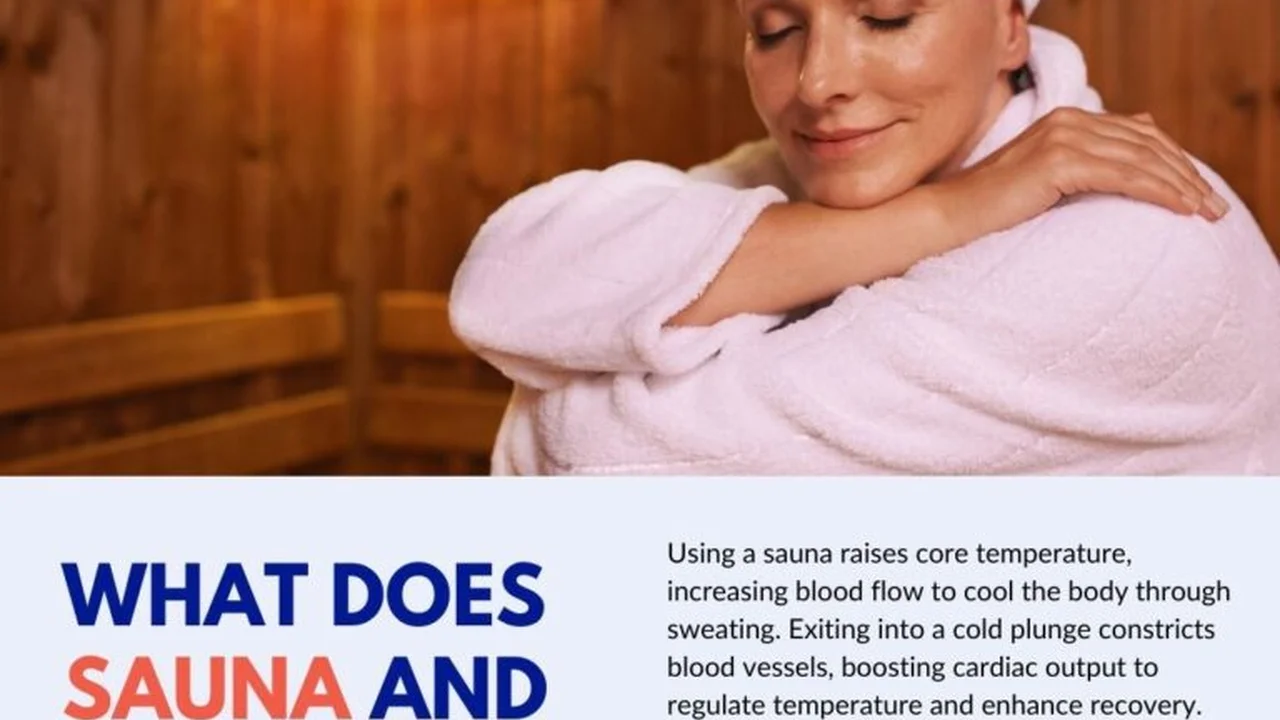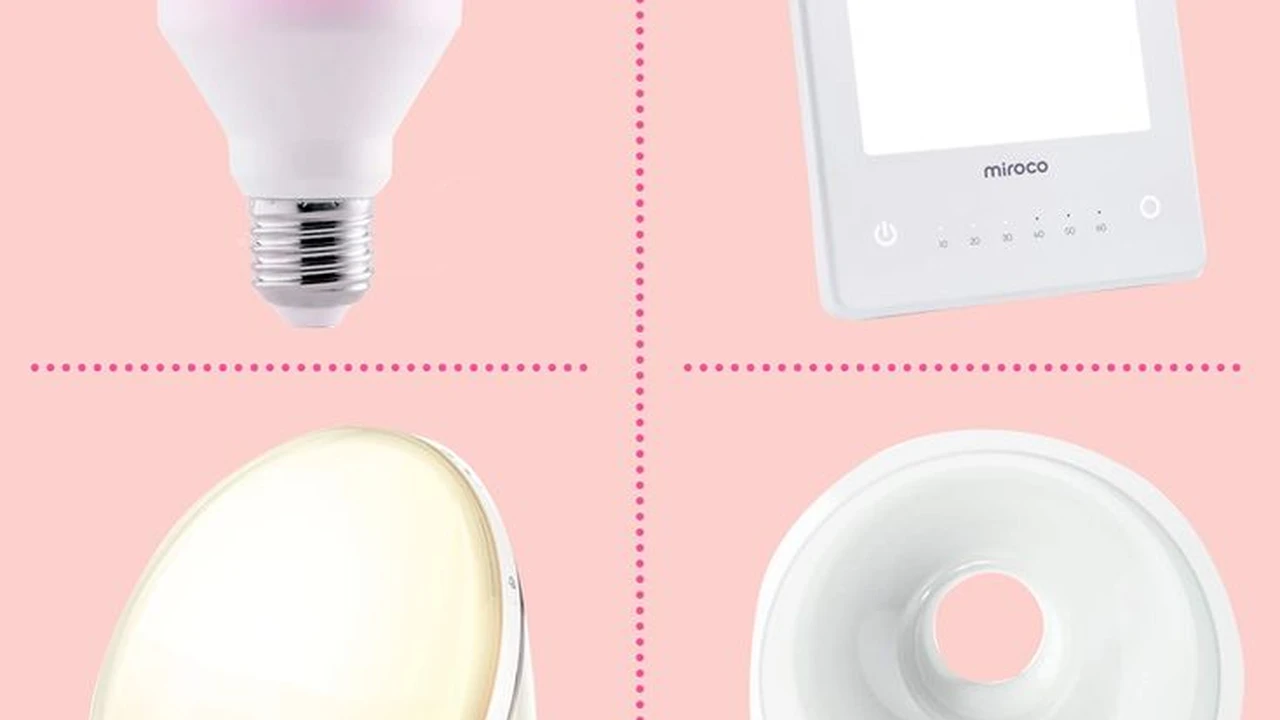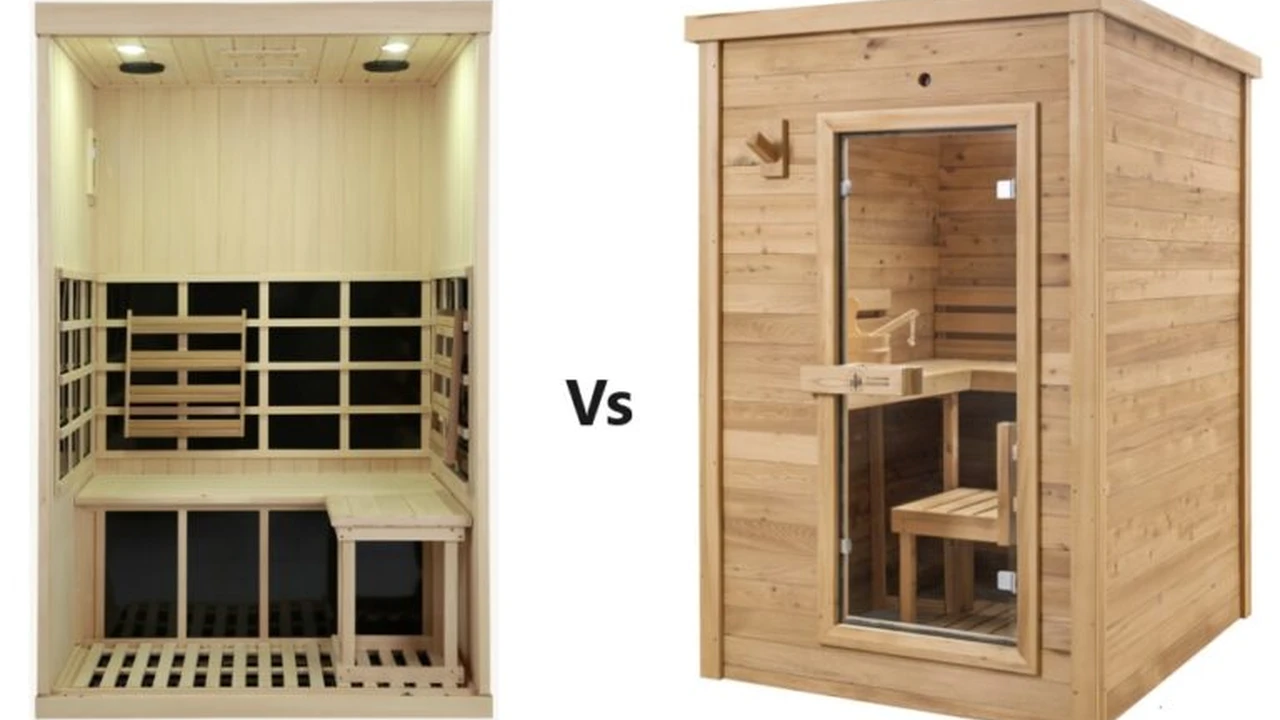Comparing Cold Plunge vs Sauna for Seasonal Recovery
Explore the benefits of cold plunge versus sauna for seasonal recovery. Discover which therapy best supports your well-being.

Explore the benefits of cold plunge versus sauna for seasonal recovery. Discover which therapy best supports your well-being.
Comparing Cold Plunge vs Sauna for Seasonal Recovery
Hey everyone! Let's dive deep into something super cool (and super hot!) that's been gaining massive traction in the wellness and biohacking communities: the age-old debate of cold plunge versus sauna. We're talking about two powerful tools for recovery, stress reduction, and overall well-being, especially as our bodies adapt to seasonal changes. Whether you're an athlete looking to optimize performance, someone dealing with chronic pain, or just a regular person trying to feel better, understanding the nuances of these therapies can be a game-changer. We'll break down the science, the practical applications, and even recommend some specific products to help you get started. So, grab a towel (or maybe a warm blanket, depending on which side you're leaning towards) and let's get into it!
The Science Behind Cold Plunge Benefits and Seasonal Adaptation
First up, let's talk about the icy embrace of the cold plunge. Also known as cold water immersion or cryotherapy, this practice involves submerging your body in very cold water, typically between 39°F (4°C) and 59°F (15°C), for a short period. The immediate reaction is usually a gasp, a shiver, and a sudden jolt to your system. But what's really happening under the surface?
When you expose your body to cold, several physiological responses kick in. Your blood vessels constrict (vasoconstriction), pushing blood away from your extremities and towards your core. This helps reduce inflammation and swelling, which is why cold therapy is so popular among athletes for muscle recovery. Once you get out of the cold, your blood vessels dilate (vasodilation), creating a 'pump' effect that flushes metabolic waste products and brings fresh, oxygenated blood to your tissues. This is fantastic for reducing delayed onset muscle soreness (DOMS).
Beyond muscle recovery, cold exposure has profound effects on your nervous system. It activates your sympathetic nervous system (the 'fight or flight' response) initially, but with consistent practice, it can train your parasympathetic nervous system (the 'rest and digest' system) to become more dominant. This leads to improved stress resilience, better mood regulation, and even enhanced sleep quality. Think about it: if your body can handle the shock of an ice bath, everyday stressors might seem a little less daunting.
Another fascinating aspect is the activation of brown adipose tissue (BAT), or brown fat. Unlike white fat, which stores energy, brown fat burns calories to generate heat. Regular cold exposure can increase your brown fat stores, potentially boosting your metabolism and aiding in weight management. Plus, there's evidence suggesting cold therapy can improve insulin sensitivity and boost your immune system by increasing white blood cell count.
For seasonal adaptation, cold plunges can be particularly beneficial. As temperatures drop in winter, regular cold exposure can help your body acclimate, making you feel less sensitive to the cold. In warmer seasons, it's an incredible way to cool down and reduce heat stress after a workout or a long day. It's about training your body to be more resilient to environmental changes.
The Science Behind Sauna Benefits and Seasonal Adaptation
Now, let's turn up the heat with saunas. Saunas, whether traditional Finnish saunas, infrared saunas, or steam rooms, involve exposing your body to high temperatures for a period. The experience is often described as deeply relaxing and detoxifying. But what's the science behind the sweat?
When you enter a sauna, your core body temperature rises. To cool itself down, your body starts to sweat profusely. This sweating process is not just about losing water; it's also a way for your body to excrete toxins, heavy metals, and other metabolic waste products through your skin. This makes saunas an excellent tool for detoxification.
The heat also causes vasodilation, meaning your blood vessels expand, increasing blood flow throughout your body. This improved circulation can help deliver oxygen and nutrients to your muscles and organs, aiding in recovery and overall tissue health. It's like a gentle cardiovascular workout without the impact, which is why some studies suggest regular sauna use can improve cardiovascular health and reduce the risk of heart disease.
Saunas are also fantastic for stress reduction and relaxation. The heat promotes the release of endorphins, natural pain relievers and mood elevators. Many people find the quiet, warm environment of a sauna incredibly meditative, helping to calm the mind and reduce anxiety. This can lead to better sleep quality and an overall sense of well-being.
For seasonal adaptation, saunas can be particularly useful in colder months. They provide a comforting warmth that can alleviate muscle stiffness and joint pain often associated with cold weather. In warmer climates, regular sauna use can actually help your body acclimate to heat, improving your heat tolerance and making hot days feel more manageable. It's about training your thermoregulatory system.
Comparing Cold Plunge vs Sauna for Recovery and Wellness
So, which one is better? The truth is, it's not an either/or situation. Both cold plunges and saunas offer unique and complementary benefits. Many biohackers and athletes actually incorporate both into their routines, often alternating between hot and cold therapies (contrast therapy) to maximize benefits.
Muscle Recovery and Inflammation: Cold Plunge Dominates
For acute muscle soreness, swelling, and inflammation immediately after intense exercise, the cold plunge is generally superior. The vasoconstriction helps to reduce blood flow to the injured area, minimizing swelling and pain. Think of it as a full-body ice pack. Sauna, while promoting circulation, might not be as effective for immediate inflammation reduction.
Detoxification and Circulation: Sauna Takes the Lead
When it comes to detoxification through sweating and overall cardiovascular health improvement, saunas have the edge. The sustained heat and profuse sweating are excellent for flushing out toxins and improving blood flow throughout the body. While cold plunges also improve circulation, the primary mechanism is different.
Stress Resilience and Mood: Both Are Powerful
Both therapies are incredibly effective for stress reduction and mood enhancement, albeit through different mechanisms. Cold plunges train your nervous system to handle stress better, leading to increased resilience. Saunas promote relaxation and endorphin release, directly reducing anxiety and improving mood. Combining them can offer a powerful one-two punch for mental well-being.
Immune System Boost: Complementary Effects
Both cold and heat exposure have been shown to boost the immune system. Cold exposure can increase white blood cell count, while sauna use can induce a mild fever-like state, which can stimulate immune responses. Using both can provide a comprehensive immune system boost.
Sleep Quality: A Synergistic Approach
Many users report improved sleep quality from both practices. Cold plunges can help regulate circadian rhythms and reduce anxiety, leading to more restful sleep. Saunas, by promoting relaxation and reducing stress, also contribute to better sleep. Using a sauna in the evening to relax, followed by a quick cool-down, can be a great pre-sleep ritual.
Practical Applications and Usage Scenarios
Let's talk about how you can actually incorporate these into your life, considering different scenarios and seasonal needs.
Post-Workout Recovery: The Athlete's Edge
If you're an athlete or someone who engages in intense physical activity, a cold plunge immediately after your workout (or within a few hours) can significantly reduce muscle soreness and speed up recovery. Aim for 5-10 minutes at a temperature you can tolerate. For example, after a heavy leg day, a cold plunge can help you feel ready for your next session much faster.
Stress Reduction and Mental Clarity: Daily Rituals
For stress reduction, a morning cold plunge can be incredibly invigorating, boosting alertness and focus for the day ahead. A 2-5 minute dip can be enough to get the benefits. In the evening, a sauna session can be a perfect way to unwind and de-stress before bed. Aim for 15-30 minutes in the sauna, followed by a cool shower.
Seasonal Adaptation: Year-Round Resilience
In winter, regular cold plunges can help your body adapt to colder temperatures, making you feel more comfortable outdoors. Saunas can provide much-needed warmth and relaxation. In summer, a cold plunge is a fantastic way to cool down and recover from heat exposure, while saunas can help improve your heat tolerance over time.
Contrast Therapy: The Best of Both Worlds
For maximum benefits, consider contrast therapy. This involves alternating between hot and cold exposures. A common protocol is 10-15 minutes in the sauna, followed by 2-5 minutes in a cold plunge, repeating this cycle 2-3 times. This creates a powerful 'vascular pump' that can enhance circulation, reduce inflammation, and boost recovery even further. Many professional athletes and biohackers swear by this method.
Recommended Products and Pricing for Your Biohacking Journey
Alright, let's get to the nitty-gritty of how you can set up your own hot and cold therapy at home, or find places to experience them. The market for cold plunges and saunas has exploded, offering options for every budget and space.
Cold Plunge Solutions: From DIY to High-Tech
1. DIY Ice Bath / Stock Tank Plunge
- Description: The most budget-friendly option. You can use a large cooler, a plastic storage bin, or a galvanized stock tank (commonly found at farm supply stores). Fill it with cold water and add ice.
- Usage Scenario: Perfect for beginners or those on a tight budget. Great for outdoor use in a backyard or patio.
- Pros: Very low initial cost, easy to set up.
- Cons: Requires constant ice replenishment, water temperature is hard to maintain consistently, can be messy.
- Estimated Price: $50 - $300 (for stock tank/container) + ongoing ice costs.
2. Portable Cold Plunge Tubs (e.g., The Ice Barrel, Plunge)
- Description: These are purpose-built, insulated tubs designed for cold water immersion. Some come with chillers to maintain a consistent temperature without ice.
- Usage Scenario: Ideal for those who want a dedicated cold plunge experience without the hassle of ice, or for smaller spaces.
- Pros: Better insulation, more comfortable upright position, some models offer integrated chilling.
- Cons: Higher initial cost than DIY, still requires some maintenance (cleaning, water changes).
- Specific Products & Pricing:
- The Ice Barrel: A popular upright barrel design. Easy to drain and clean. No chiller included, so you still need ice. Price: ~$1,200 - $1,500.
- Plunge (The Cold Plunge): A premium option with an integrated chiller and filtration system, allowing for consistent cold temperatures without ice. Available in various sizes. Price: ~$5,000 - $12,000+.
- Polar Plunge (by Redwood Outdoors): Offers both ice-ready tubs and models with integrated chillers. Good quality wooden options. Price: ~$2,000 - $8,000+.
3. Commercial Cold Plunge Units (e.g., Morozko Forge)
- Description: High-end, self-contained units with powerful chillers, filtration, and often UV sanitation. Designed for continuous use and precise temperature control.
- Usage Scenario: For serious biohackers, wellness centers, or those who want the absolute best and are willing to invest.
- Pros: Ultimate convenience, precise temperature control, minimal maintenance, superior filtration.
- Cons: Very high cost, requires dedicated space and power.
- Specific Products & Pricing:
- Morozko Forge: Considered the gold standard for home cold plunges. Maintains ice-cold temperatures automatically. Price: ~$10,000 - $20,000+.
Sauna Solutions: Traditional, Infrared, and Portable
1. Portable Infrared Saunas
- Description: These are compact, often foldable, tent-like saunas that use infrared heaters. They heat your body directly rather than heating the air around you.
- Usage Scenario: Excellent for small apartments, renters, or those who want a sauna experience without a permanent installation.
- Pros: Affordable, easy to set up and store, lower operating temperature (more comfortable for some), direct heat penetration.
- Cons: Not as hot as traditional saunas, less social, may not offer the same 'sweat' experience for everyone.
- Specific Products & Pricing:
- HigherDOSE Infrared Sauna Blanket: A popular and very compact option. You lie down in it. Price: ~$500 - $700.
- SereneLife Portable Infrared Sauna: A tent-style sauna you sit in. Price: ~$200 - $400.
2. Home Infrared Saunas (Cabin Style)
- Description: These are dedicated sauna cabins made from wood, equipped with infrared heaters. They come in various sizes, from single-person to multi-person units.
- Usage Scenario: For those with dedicated space who want a more traditional sauna feel with the benefits of infrared.
- Pros: Easy to assemble, energy-efficient, lower operating temperatures, deep tissue penetration.
- Cons: Higher cost than portable options, requires dedicated space, not as hot as traditional saunas.
- Specific Products & Pricing:
- Sunlighten Saunas: High-quality, full-spectrum infrared saunas. Known for their advanced technology. Price: ~$3,000 - $10,000+.
- Dynamic Saunas: More budget-friendly options for home infrared saunas. Price: ~$1,000 - $3,000.
3. Traditional Finnish Saunas (Electric or Wood-Fired)
- Description: These saunas heat rocks, which then radiate heat and allow for steam when water is poured over them. They operate at much higher air temperatures.
- Usage Scenario: For those who crave the authentic, intense heat and steam experience of a traditional sauna.
- Pros: Very high temperatures, ability to create steam (löyly), deep relaxation, social experience.
- Cons: Requires more complex installation (electrical wiring or chimney for wood-fired), higher energy consumption, takes longer to heat up.
- Specific Products & Pricing:
- Almost Heaven Saunas: Offers a wide range of traditional barrel and indoor saunas. Price: ~$3,000 - $8,000+ (for kits, installation extra).
- Custom Built Saunas: If you have the space and budget, a custom-built sauna can be tailored to your exact specifications. Price: ~$5,000 - $20,000+ (depending on size, materials, and features).
Public Facilities and Memberships
If investing in a home unit isn't feasible, remember that many gyms, wellness centers, and spas offer saunas and sometimes even cold plunge facilities. A membership might be a cost-effective way to access these therapies regularly. Look for local cryotherapy centers or dedicated wellness studios that offer cold plunge sessions.
Safety Considerations and Best Practices
While both cold plunges and saunas offer incredible benefits, it's crucial to approach them safely. Always listen to your body and consult with a healthcare professional, especially if you have any underlying health conditions (e.g., heart conditions, high blood pressure, pregnancy, Raynaud's disease).
Cold Plunge Safety Tips:
- Start Slow: Don't jump into freezing water for 10 minutes on your first try. Begin with shorter durations (30 seconds to 1 minute) and gradually increase as you adapt.
- Temperature: Aim for 39-59°F (4-15°C). Colder isn't always better, especially when starting out.
- Breathing: Focus on slow, deep breaths to calm your nervous system. Hyperventilating can be dangerous.
- Supervision: If you're new to it, have someone nearby, especially for very cold temperatures.
- Warm Up Afterwards: Don't just shiver. Move around, do some light exercises, or put on warm clothes to help your body rewarm naturally.
Sauna Safety Tips:
- Hydrate: Drink plenty of water before, during (if needed), and after your sauna session to prevent dehydration.
- Duration: Start with shorter sessions (10-15 minutes) and gradually increase to 20-30 minutes as tolerated.
- Listen to Your Body: If you feel dizzy, lightheaded, or unwell, exit the sauna immediately.
- Avoid Alcohol: Do not consume alcohol before or during a sauna session, as it can increase the risk of dehydration and heatstroke.
- Cool Down: After a sauna, take a cool shower or allow your body to cool down gradually before dressing.
The Synergistic Power of Hot and Cold Therapy
Ultimately, the choice between cold plunge and sauna isn't about picking a winner. It's about understanding their individual strengths and how they can complement each other to create a powerful biohacking routine. Whether you're aiming for faster recovery, enhanced mental resilience, improved sleep, or just a general boost in well-being, incorporating both hot and cold therapies can unlock new levels of health and vitality.
Think of it as training your body's thermoregulatory system, making it more adaptable and resilient to environmental stressors. This adaptability is key for seasonal wellness, allowing you to thrive whether it's the dead of winter or the peak of summer. So, go ahead, experiment, find what works best for your body and your lifestyle, and enjoy the incredible benefits of hot and cold exposure!
:max_bytes(150000):strip_icc()/277019-baked-pork-chops-with-cream-of-mushroom-soup-DDMFS-beauty-4x3-BG-7505-5762b731cf30447d9cbbbbbf387beafa.jpg)





